During the 10th and 11th centuries, living conditions in the motte-and-bailey castles and masonry keeps were rather harsh and dull. Daily life was spent in the aula. Light was feeble, coming from a few loopholes or narrow windows which also let cold drafts penetrate; at night they were shielded by cloth or closed by wooden shutters, and the only light was provided by smoky torches, lanterns and guttering candles. In spite of wood burning in the fireplace, the hall was swept by stench, cold and drafts. Humidity dampened the walls, and the
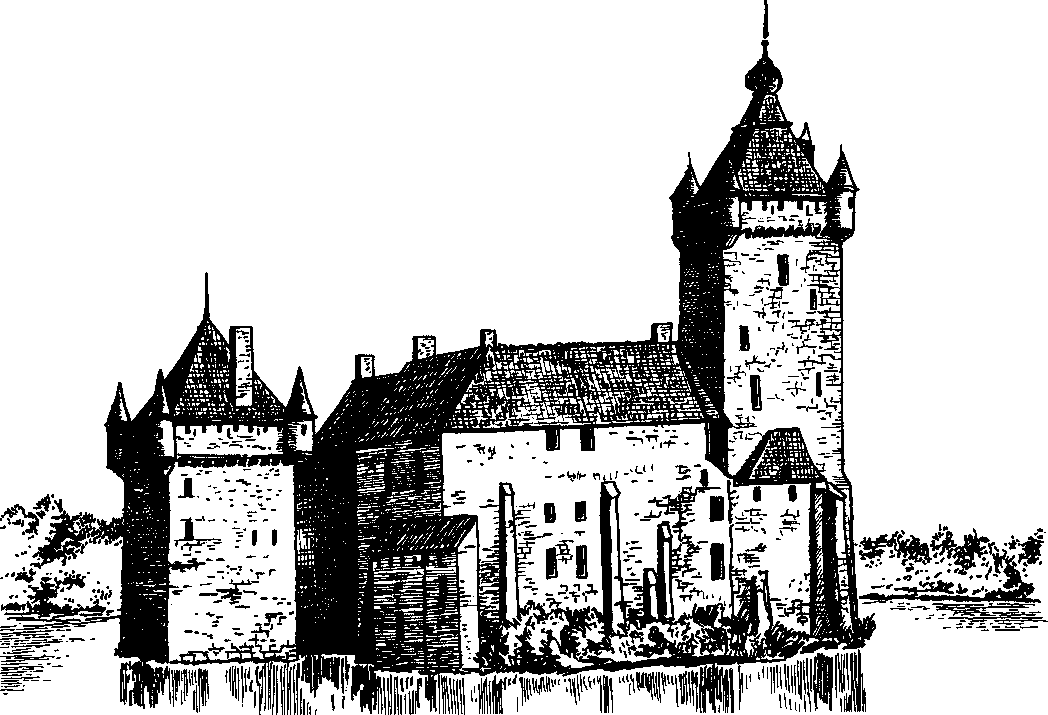
Reconstruction of castle Montfoort (Netherlands). Montfoort was situated on the Yssel River west of Utrecht; like Oostvoorney it was a waterburcht. The castle was constructed by the bishop of Utrecht to resist the boisterous and expansion-minded neighbors, the counts of Holland. Looted and badly ravaged by Louis XlY's troops in 1672, the castle is now in ruins.
Chilly air was disturbed by bad smells and smoke. The smoke, after eddying round the hall, escaped through a louver, an opening in the roof above the central hearth. Sanitation was primitive, and cleanliness was little regarded in many homes. Because the floor was often cold, it was sometimes covered with planks, furs and carpets.
Domestic utensils and furniture were rudimentary. The table was a plank supported by two trestles, not always covered by a tablecloth. Ordinary folk sat at the table upon wooden benches, forms, stools and bushes of straw; chairs were the perquisite of the higher ranks. A few bins, chests and boxes serve as wardrobes and cupboards. Beds were merely straw mattresses in which several people slept without privacy. The fireplace was used for both heating and cooking. Food was generally roasted meat and boiled vegetables; drink was strong beer and some bad wine served in drinking horns and bowls. Meals were collectively taken in poor terra-cotta plates and pewter dishes; knives were used, but forks were as yet unknown, and guests ate with their fingers.
The castle was functioning in autarky, the community living retired within itself. With no means of mass communication, any news that arrived at the castle was often weeks or months old.
The lord was frequently a brutal and illiterate person who was bored when he could not go out, riding his horse, inspecting his fief and administrating his domain with the assistance of his provost. His chaplain was very frequently the only literate man of the household and served not only as a religious servant but often too as a secretary, maintaining correspondence and written records.
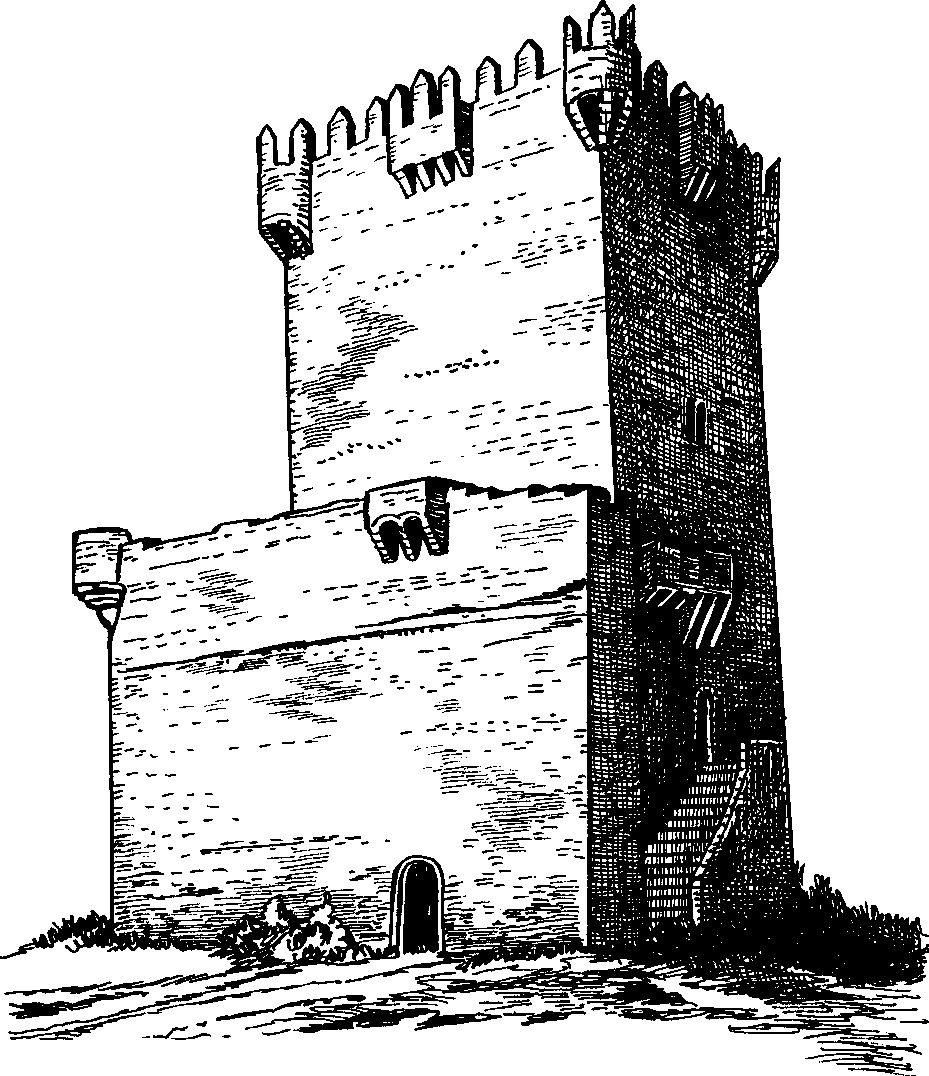
Chaves (Portugal). Situated on the river Tdmega in the northern province Tras-os-Montes, Chaves was an ancient Celtic oppidum, then a Roman town called Aquce Plavice founded about 78 AD. Occupied by the Moors, Chaves was reconquered by the Christians in 1160. The 12th century square medieval donjon (Torre de Menagem) was reconstructed by order of King Dinis (1279-1325) and used as a residence for the dukes of Braganga in the 14th century.
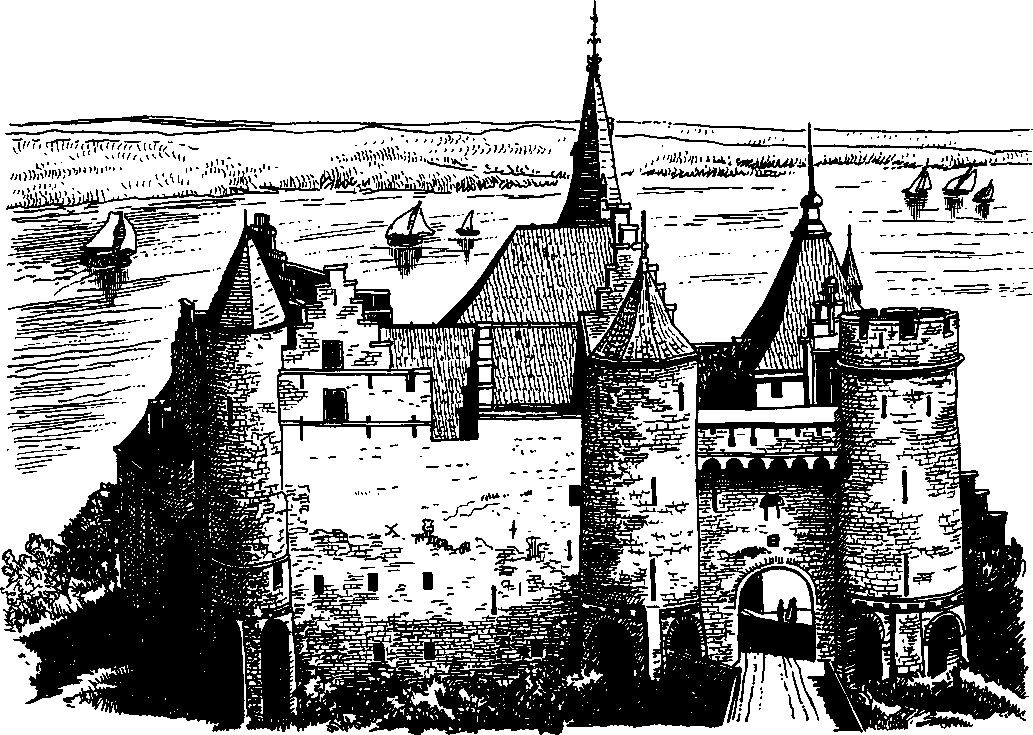
Steen castley Antwerp (Belgium). Antwerpy situated on the river Scheldty was the second important town in Belgium after Brussels. The Steen castle was a part of the first urban fortifications constructed in order of the German Ottoman emperors about 980. The castle and the Saint-Walburg church were the core of the old city (called Burchtjy which was defended by a wet moaty an earth wall and a palisade. The Steen castle as it appears today is the result of considerable enlargements in the 14th century.
The greatest adventures in a lord’s life were feasts, tournaments, jousts, and travels such as going to war or off on a pilgrimage, or sailing away to the Holy Land for the Crusade. His main day-to-day pleasures were physical and military training, but usually his favorite entertainment was hunting. Hunting gave the lord an opportunity to show off his strength and skill, but it also provided the community with furs and brought additional food. Hunting was also a means of getting rid of wild animals regarded as noxious or dangerous (bears, wolves, foxes, weasels). Game such as deer and wild boars were hunted on horseback with spears and a pack of hounds. Birds and rabbits were hunted with a tamed falcon. Falconry was an art and a science demanding hard work, care and patience to train a wild bird to attack and catch smaller birds and to bring them back to the falconer. Hunting was jealously reserved for the nobility, and poaching was strictly forbidden and repressed with brutality.
In periods of war, when a conflict was expected, or when a gang of bandits was known to be in the area, life in the castle became tense. Brattices were installed, security measures were rigorously increased, the entrance was carefully guarded, and sentries were doubled. At night security was reinforced by ferocious hounds. The drawbridge was lowered only when all arriving persons had been identified and checked out. Secret passwords were used before entering the fortress. Nobody was allowed to
HX
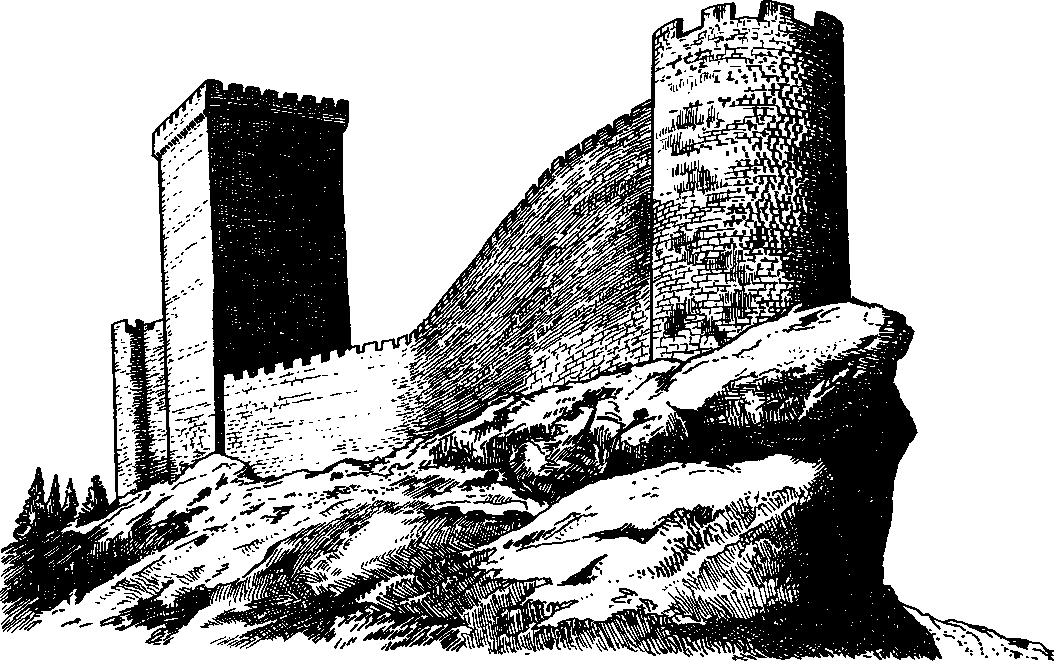
Castle Penaran (Spain). The castle Penaran was situated in southern Castille. Just like castles Penafiely Soria, Berlanga and Gormaz, it belonged to a chain of fortresses constructed along the river Douro in the 11th century to defend the region against the Moors. Penaran included a massive square tower and a crenellated enceinte reinforced by towers following the outline of the hill.
Depart the keep without a strong armed escort. The peasants of the neighborhood were allowed to find refuge within the keep’s shirt with cattle, food and goods. Even the harvest and vintage seasons were a time for extra security, during which the lord and his mounted men patrolled around fields and vineyards to protect harvesters against hungry looters and wicked marauders.
The lord had married his wife for her dowry, to increase his territorial power, to put an end to a war or a family vendetta, or to consolidate an alliance. Wife and daughters were under the lord’s tutelage and directed the domestic life and the servants. If the lord died or could not rule anymore because of illness or captivity, the wife led the domain until the rightful heir was old enough to rule, according to a legal settlement of regency in her favor.
The castle routine followed the rhythm of seasons: Life, closely related to and dependent on nature, was punctuated by petty pleasures, daily worries, harvests and vintages, religious feasts, births, marriages and mourning. The slightest incident took on the proportions of an event; when the community was visited by a group of pilgrims, a traveling friend or a relative, wandering merchants, a religious dignitary, a party of begging monks, or the suzerain, it gave residents the opportunity to organize a reception or banquet and to obtain news and gossip from the outside world. When a group of tumblers, jugglers, singers, troubadours, minstrels or trou-veres stopped in the castle it was a time for fun and rejoicing. Southern France and Italy had, however, a more refined cultural life because many rich noblemen lived in town in luxurious urban palaces where they maintained idle and mannered courts with sophisticated and affected entertainments. Sponsored and encouraged by rich sovereigns and high noblemen, an abundant literature of courtesy was created and developed, in which women.
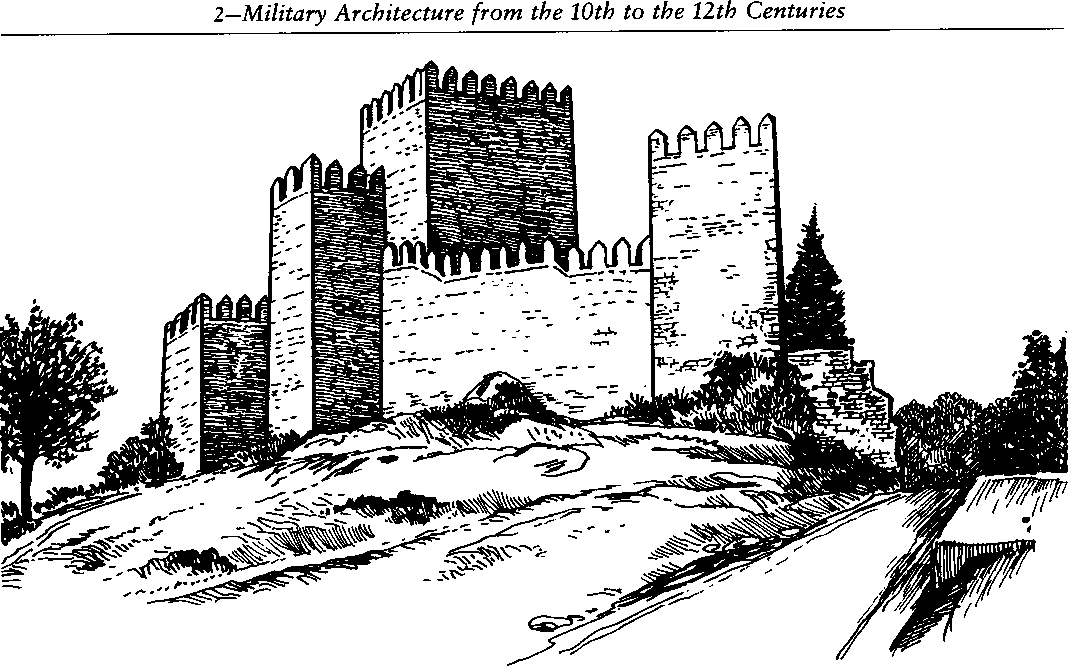
Guimaraes castle (Portugal). Guimardes is situated southwest of Braga in the province Minho. The 28 m high donjon, placed north of the city, was founded about 960 by the countess of Mumadona in order to protect the town and its monastery. Guimardes was the cradle of Portugal. The Trench knight Henri de Bourgogne, count of Portucale (originally the region of Porto), installed his residence in Guimardes and enlarged the castle with a triangular enceinte. His son, Afonso Henriques, born in 1110, became the first king of Portugal in 1139. Guimardes has kept the donjon, the enceinte and the Pago dos Duques, the palace of the dukes ofBraganga, built near the castle in the 15th century.
Chivalry and idealized love replaced coarse military vainglory. In the course of the 12th century, a new breed of nobility appeared, characterized by a strong elitist spirit, exclusive manners and distinctive rites influenced by the ideal of chivalry.




 World History
World History









